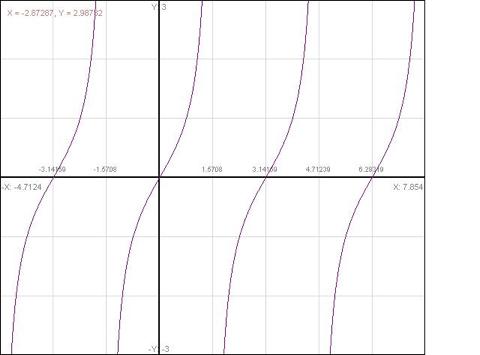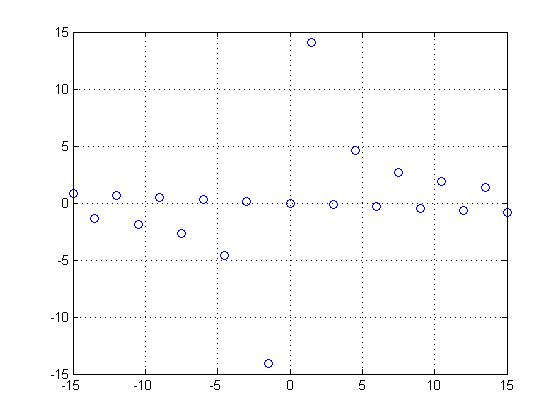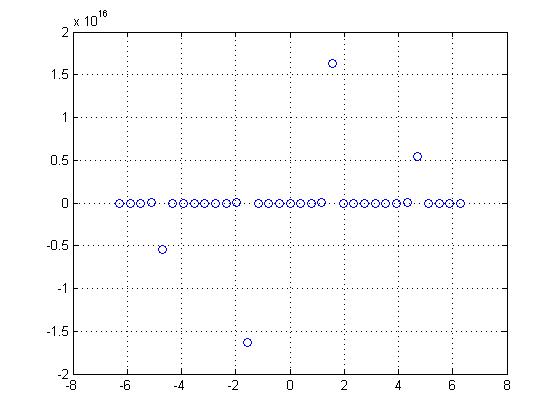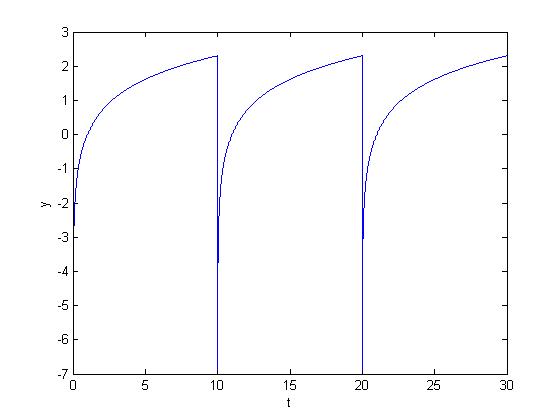Part A: Periodic Signals Revisited
By sampling a CT periodic signal at different frequencies, one can produce both a periodic and non-periodic DT signal. I chose to use the tangent signal from Homework 1.
$ \tan\theta = \frac{\sin\theta}{\cos\theta}\, $

By sampling the signal with x[n]=tan[k+n] and k=1.5, it is possible to produce a non-periodic DT signal.

By sampling the signal with x[n]=tan[k+n] and $ k = {\pi\over 8} $

One can also create a periodic signal by adding together an infinite number of shifted copies of a non-periodic signal periodically, either in CT or DT. I will use the natural logarithm function in CT to show this property. y=ln(x)


